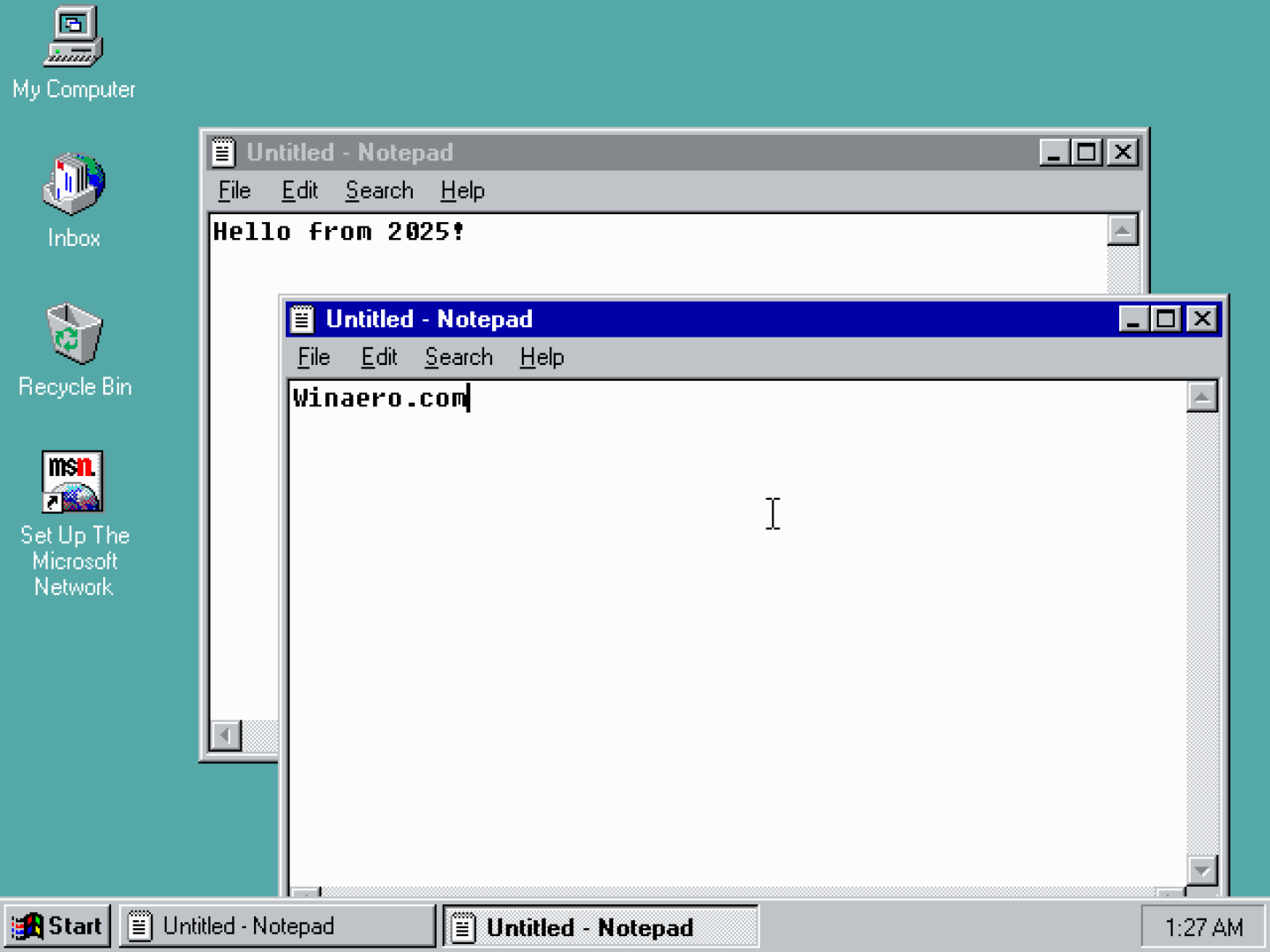At the end of August 2025, the graphical multitasking operating system Windows 95 (codename Chicago) turned 30 years old. Mainstream support for Windows 95 ended on December 31, 2000, and extended support lasted for one more year, ending on December 31, 2001.
Advertisеment
Windows 95 is an operating system developed by Microsoft, released on August 24, 1995. It is a consumer-oriented graphical operating system that combines a 32-bit architecture with support for 16-bit applications.
 Windows 95 introduced a new user interface featuring the iconic Start menu and the start button, taskbar, and desktop icons, which became standard elements in subsequent Windows versions. It supports preemptive multitasking for 32-bit applications and includes built-in support for long file names, plug-and-play hardware detection, and TCP/IP networking.
Windows 95 introduced a new user interface featuring the iconic Start menu and the start button, taskbar, and desktop icons, which became standard elements in subsequent Windows versions. It supports preemptive multitasking for 32-bit applications and includes built-in support for long file names, plug-and-play hardware detection, and TCP/IP networking.
The classic theme user interface of Windows 95 features a clean, boxy design with a gray color scheme and simple graphical elements. Window frames use a two-tone gray border with minimize, maximize, and close buttons in the upper-right corner. Menus appear with a flat, two-dimensional look and use drop-down layouts. Visual feedback, such as highlighting selected items and button states, relies on basic shading and borders rather than gradients or transparency. To me, this style still looks better than Windows 11, which has a visually dull, blueish color scheme, with flat buttons and other elements that don't look as prominent compared to a 30-year-old OS.
This interface marked a significant departure from the program manager style of Windows 3.1, offering a more intuitive and visually consistent experience. The design language of Windows 95 influenced all future versions of Windows, establishing core layout principles that persisted for years.
The Windows 95 version 4.00.950 distribution kit was supplied on 13 diskettes (these were specially formatted 1.68 MB diskettes), while OSR 2 came on 22 disks.
The average PC configuration at that time included a 320 MB hard drive, 8 MB RAM, and a 386DX or higher processor (486 was recommended for installing and running the OS). Windows 95 requires at least a 386DX processor, 4 MB of RAM, and 50–55 MB of hard disk space. It runs on top of MS-DOS but integrates it more closely than previous versions, reducing reliance on command-line operations.
Early versions of Windows 95 did not have built-in Internet support, but did have a "Microsoft Network" icon on the desktop, which was later removed.
Windows 95 was the first version to require a product key. Although every version of MS-DOS (Microsoft Disk Operating System) had a serial number, Windows 1.0, 2.0, and 3.x did not require a product key. Microsoft only implemented the product key requirement for activation in Windows 95. However, even Windows 98 had a basic product key system. Users were required to enter a product key during installation, but it was not strictly required. Often, the same key could be used on multiple computers.
Windows 95 introduced profiles as an optional feature, they only stored personalized settings such as wallpaper and desktop settings.
Microsoft developers also added support for long (up to 256 characters) file names and the Plug and Play system to Windows 95.
The release included support for FAT16 and later VFAT for long file names. Windows 95 gained widespread adoption and marked a significant shift in personal computing by making graphical interfaces more accessible to mainstream users. It was succeeded by Windows 98 in 1998. Microsoft ended support for Windows 95 on December 31, 2001.
For nostalgia, check out Windows 95 In Your Web Browser, and Windows 95, running in an Electron app.
Support us
Winaero greatly relies on your support. You can help the site keep bringing you interesting and useful content and software by using these options:

Happy days! But sad to think that 30 years have passed.